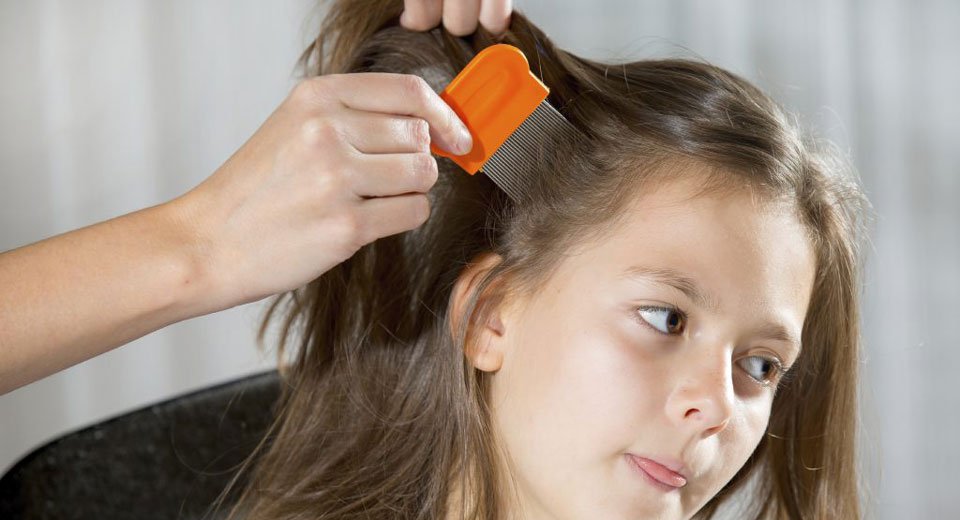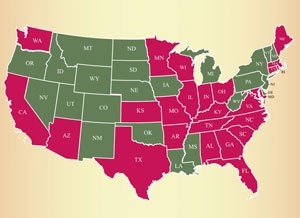Super lice? No need to be super worried
With kids back in the classroom, snacks and lunches may not be the only thing they are sharing.

Photo courtesy of Kyong Yoon, Ph.D
Lice are a fact of life for school-age kids and that fact just became a little bit scarier for parents. Recent research shows that lice are 100 percent resistant to common over-the-counter treatments in 26 states, including Massachusetts.
Researcher Kyong Yoon, Ph.D, presented his findings at the American Chemical Society’s National Meeting & Exposition in Boston on Aug. 18. Yoon tested head lice for three gene permutations that together altered the insect’s nervous system and desensitized them to the effects of pyrethroids, the insecticide found in common lice treatments like Rid and Nix.
“It is definitely striking terror in the hearts of parents,” says Kathryn Rudman, MD, a pediatrician at Seaside Pediatrics in Yarmouth. “I have to say the most panicked calls I get from parents in the night are not about respiratory issues or vomiting. It’s lice.
“People are on the ceiling when they call because they know they have plans the next day and they don’t want to give it to anybody else.”
Dr. Rudman finds news reports about “super lice” frustrating because they are unnecessarily frightening.
“I think people picture them as being bigger and badder, when really they are the same old lice,” she says. “The genetic resistance is concerning because they don’t respond to the typical over-the-counter applications. But I like to remind people that there are other ways to treat them that don’t involve lice toxins.”
The first method is to simply make sure you comb out every single nit. It’s time consuming, but once the lice are gone, they’re gone.
Dr. Rudman says she hasn’t seen any studies on using products like olive oil and mayonnaise, but both get great anecdotal reviews from patients. They don’t kill the lice, but slow them way down so they are much easier to comb out.
She has also seen great results with the Nuvo Method, created by Dale Pearlman, MD, a dermatologist in Menlo Park, California. Dr. Pearlman presented his study on the effectiveness of using Cetaphil, a non-toxic gentle skin cleanser that suffocates lice and requires minimal clean up. It is 96 percent effective.
Another non-toxic treatment called dimethicone, tested by researchers at the Deidre Imus Environmental Health Center at Hackensack University Medical Center, has equally intriguing results.
For dimethicone, researchers did tests with the cooperation of school nurses. After one day of treatment with dimethicone, 98.3 percent of children were free of live lice and 55.2 percent were free of viable eggs. When rechecked two weeks later, 96.4 percent were lice free and 80.7 percent were free of viable eggs.
Leif Norenberg, MD, a pediatrician at Briarpatch Pediatrics, says prescriptions like Ovide (0.5 percent malathion) work very well to get rid of head lice, but he questions whether parents should put pesticides on their children’s hair.
“All of these products are noxious and flammable and if you get them in a child’s eyes they sting like crazy,” he says. “I think the most important thing to remember is that head lice are harmless.
“They are certainly a nuisance and kids miss millions of days of school per year and parents lose a lot of days of work because of head lice, but they’re harmless. They don’t transmit any diseases.”
Both Dr. Norenberg and Dr. Rudman support the new policy that overturns the former “no nit” rule in schools. In the past, children were sent home immediately if someone noticed they had lice and they could not return to school until they were entirely nit free.
More recently the American Academy of Pediatrics issued a statement that children should not be sent home from school or banned from returning because of lice. Head lice are not readily transmitted in a school setting and by the time most cases of lice are discovered, the child has already had them for a month.
Local pediatricians are working with school nurses to ensure this policy is followed.
“I have a huge problem with the stigmatizing of lice,” says Dr. Rudman. “Sending a child home from school with lice can have years of consequences. They are always known as the kid that was sent home with lice.”
The lowdown on lice
- Lice do not jump; they crawl. The only way they can be transmitted is from hair-to-hair contact.
- One of the new top ways to transmit lice? “Selfies,” where two friends put their heads together for a photograph.
- Lice live for about a month and female louses lay about seven to 10 eggs per day. The eggs hatch eight to 10 days after being laid.
- Small brown nits less than a quarter of an inch from the scalp are the only nits that contain eggs. Nits further down the hair shaft are empty egg casings and pose no threat.
- Lice are far more attracted to clean, freshly shampooed hair than oil or dirty hair because they can’t stick to the hair shaft of dirty hair as easily.
- Lice and their nits die within 55 hours of being off their host. They are incubated by body heat, so spending hours cleaning your house isn’t necessary. Washing bedding and hair brushes and a regular vacuum is enough.
- Dogs and cats do not spread lice.
- Even though lice aren’t harmful, they can cause itching, so parents can give their children oral antihistamines like Benadryl, Claritin or Allegra to relieve itching.
- The treatment of lice is currently has a $1 billion a year price tag, up from $367 million in the 1990s.
